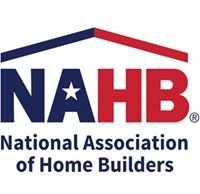WASHINGTON, D.C. – November 14, 2013 – (RealEstateRama) — Strengthening house prices and increased interest rates in metros across the country contributed to lower housing affordability in the third quarter, according to the National Association of Home Builders/Wells Fargo Housing Opportunity Index (HOI), released today.
NAHB in National News |
NAHB in Social Media |
In all, 64.5 percent of new and existing homes sold between the beginning of July and end of September were affordable to families earning the U.S. median income of $64,400. This is down from the 69.3 percent of homes sold that were affordable to median-income earners in the second quarter, and the biggest HOI decline since the second quarter of 2004.
“Housing affordability is being negatively affected by a ‘perfect storm’ scenario,” observed NAHB Chairman Rick Judson, a home builder from Charlotte, N.C. “With markets across the country recovering, home values are strengthening at the same time that the cost of building homes is rising due to tightened supplies of building materials, developable lots and labor.”
“The decline in affordability is the result of higher mortgage rates and the more than year-long steady increase in home prices,” observed NAHB Chief Economist David Crowe. “While affordability has come down from the peak in early 2012, the index still means a family earning a median income can afford 65 percent of homes recently sold. Some of the decline in the affordability index could be the result of a loss in some more modest priced home sales as tight underwriting standards have limited the purchases by moderate income families.”
Indianapolis-Carmel, Ind., and Syracuse, N.Y. were tied as the nation’s most affordable major housing markets as 93.3 percent of all new and existing homes sold in this year’s third quarter were affordable to families earning the areas’ median incomes of $65,100 and $65,800, respectively. Meanwhile, Kokomo, Ind., claimed the title of most affordable smaller market, with 96.9 percent of homes sold in the third quarter being affordable to those earning the median income of $60,100.
Other major U.S. housing markets at the top of the affordability chart in the third quarter included Youngstown-Warren-Boardman, Ohio-Pa.; Harrisburg-Carlisle, Pa.; and Buffalo-Niagara Falls, N.Y.; in descending order.
Smaller markets joining Kokomo at the top of the affordability chart included Vineland-Millville-Bridgeton, N.J.; Davenport-Moline-Rock Island, Iowa-Ill.; Bay City, Mich.; and Springfield, Ohio.
For a fourth consecutive quarter, San Francisco-San Mateo-Redwood City, Calif. held the lowest spot among major markets on the affordability chart. There, just 16 percent of homes sold in the third quarter were affordable to families earning the area’s median income of $101,200.
Other major metros at the bottom of the affordability chart included Los Angeles-Long Beach-Glendale, Calif.; Santa Ana-Anaheim-Irvine, Calif.; New York-White Plains-Wayne, N.Y.-N.J.; and San Jose-Sunnyvale-Santa Clara, Calif.; in descending order.
All of the five least affordable small housing markets were in California in the latest quarter. At the very bottom of the affordability chart was Santa Cruz-Watsonville, where 20.3 percent of all new and existing homes sold were affordable to families earning the area’s median income of $73,800. Other small markets at the lowest end of the affordability scale included San Luis Obispo-Paso Robles, Santa Rosa-Petaluma, Napa and Salinas, respectively.
Please visit www.nahb.org/hoi for tables, historic data and details.
Editor’s Note: The NAHB/Wells Fargo Housing Opportunity Index (HOI) is a measure of the percentage of homes sold in a given area that are affordable to families earning the area’s median income during a specific quarter. Prices of new and existing homes sold are collected from actual court records by Core Logic, a data and analytics company. Mortgage financing conditions incorporate interest rates on fixed- and adjustable-rate loans reported by the Federal Housing Finance Agency.
The NAHB/Wells Fargo HOI is strictly the product of NAHB Economics, and is not seen or influenced by any outside party prior to being released to the public







